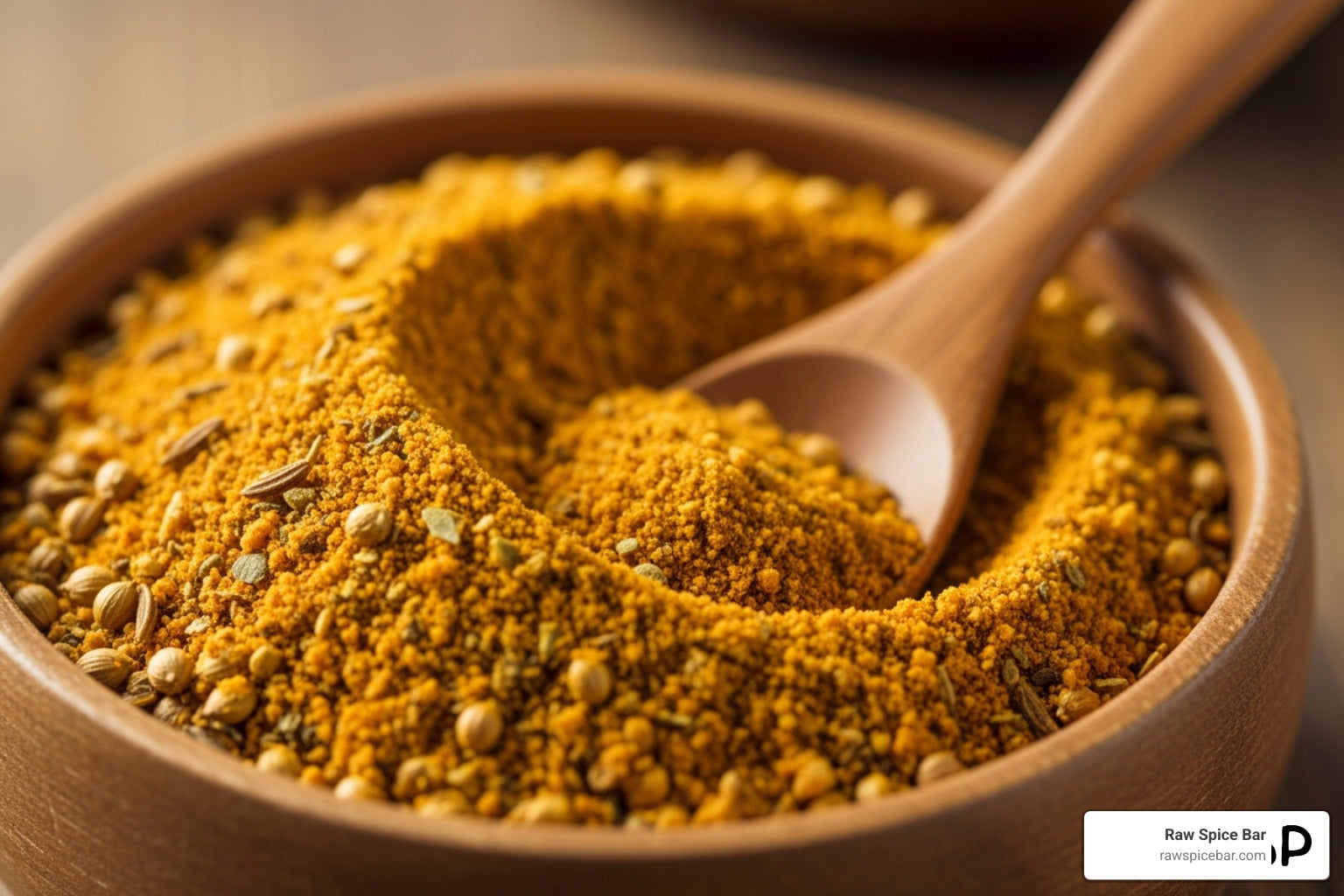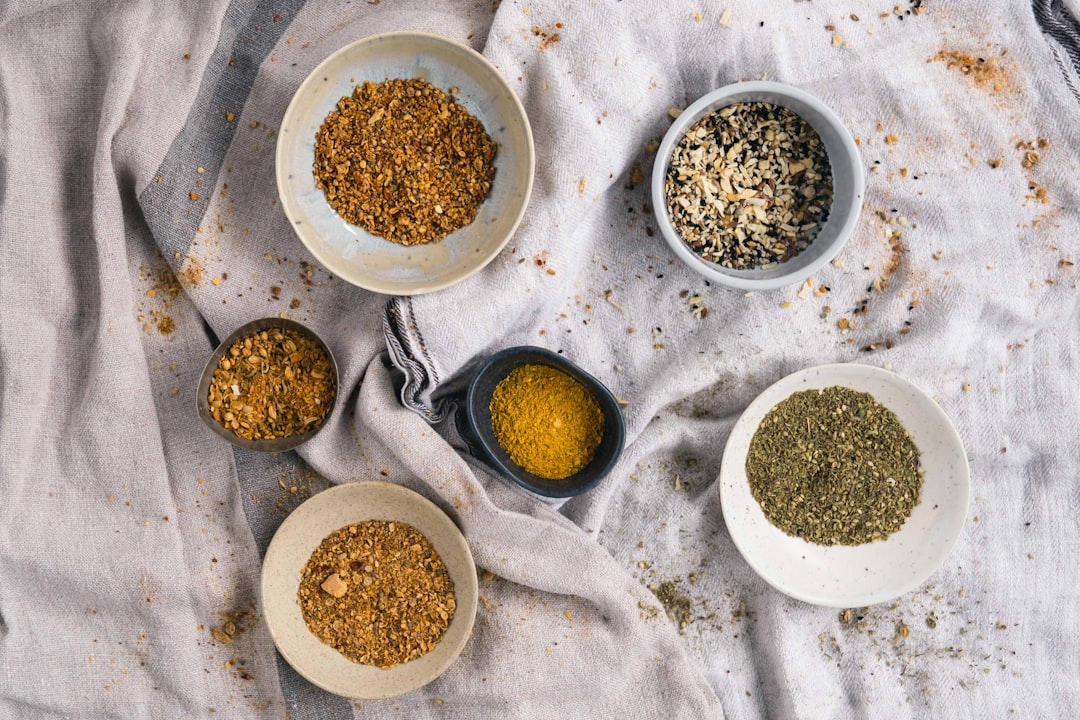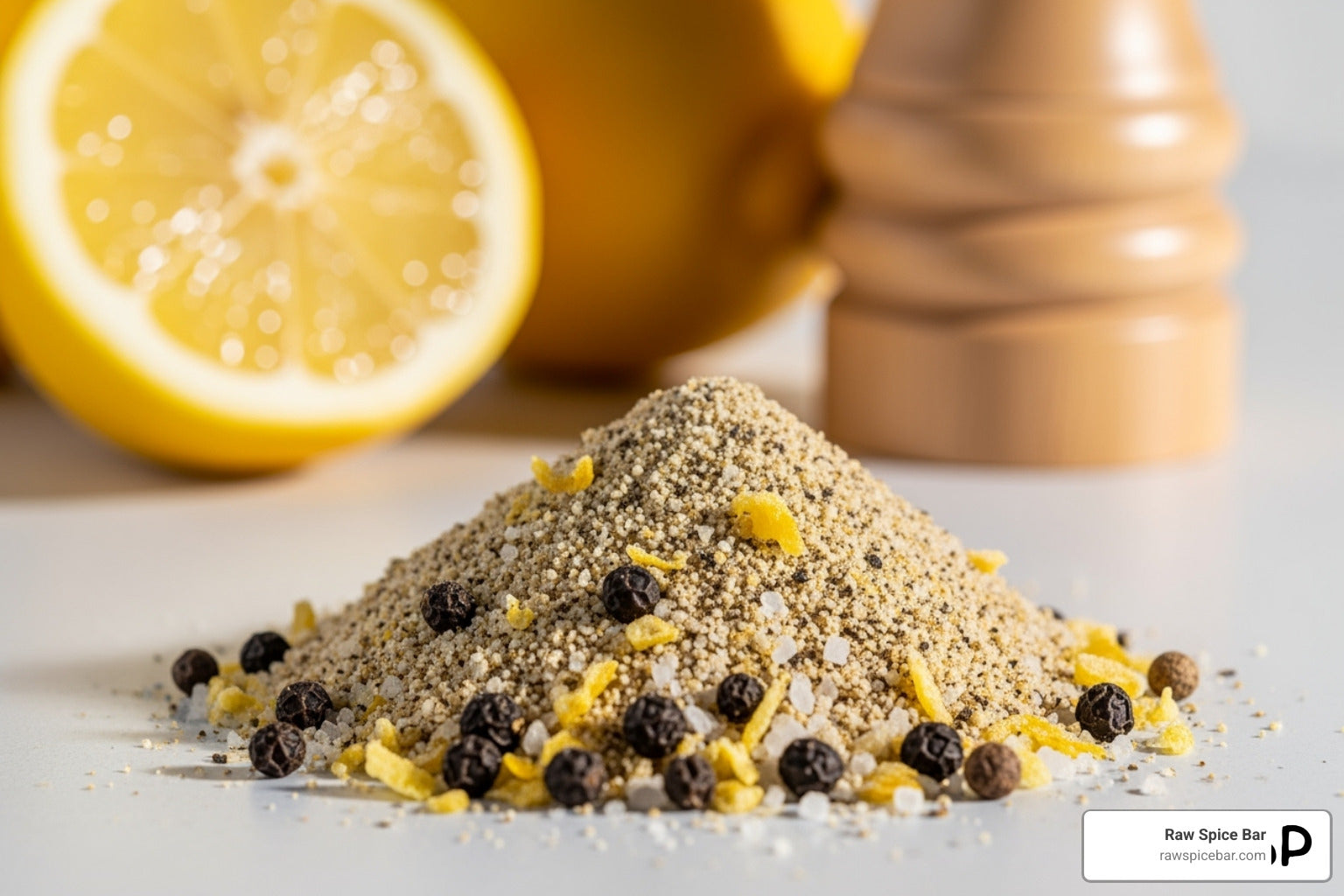What is a spice blend
A spice blend combines different ground spices to create a distinct flavor. Unlike dry rubs, with their rough texture and large granules for meaty crusts, a spice mix feels finer. You often stir it into sauces or soups where its powdery nature blends smoothly.
This fine powder doesn't just add taste; it weaves seamlessly into dishes without altering the food's surface feel—perfect for when you crave depth in every spoonful rather than a textured kick on the outside of your bite.
Understanding Spice Blends
A spice blend is a careful mix of flavors. Each one has its own taste and smell—sweet, sour, or sharp. Knowing how each works lets you craft the right combo for your dish's needs; like curry powder in Indian meals or paprika with cumin for Mexican fare.
Find harmony in food. Balance sweet, tangy, and bitter elements. Understand spices. Know their contributions. Define your goal. Know why you're mixing. Experiment. Try different combinations. Strive for balance. Aim for a harmonious flavor. Choose quality. Use fresh, high-quality spices.
Store properly. Keep blends from air and heat. Spices are magic that turns simple ingredients into feasts full of life!
Creating Your Own Mixes
When one decides to venture into the art of mix-making, they unlock a realm where flavors merge. It starts with choosing spices that complement each other. A chef thinks about taste: will it be hot or mild?
Sweet notes can balance heat; cinnamon pairs well with chili for this reason. In every kitchen, salt is key - not too much but just enough to enhance aromas and tastes alike. To create depth, herbs like rosemary and thyme are added; their earthy tones lay foundations in many blends.
Experimentation leads to perfection over time – tweaking ratios brings out distinct profiles meant for various dishes. For meat rubs or veggie seasoning, coarse textures work best as they slowly release essence while cooking.
Precision matters when weighing ingredients so that every batch remains consistent in flavor and quality—after all, good food relies on predictable seasonings!
Popular Global Spice Combinations
Spice blends offer a world of flavors in just one handful. Take the classic mix featuring cumin, cardamom, pepper, and fenugreek seeds—each component adds depth. Cumin battles inflammation with turmeric at its side; sweet-scented fenugreek aids digestion too.
Picture this blend brightening chicken curry or lifting lentil soups to new heights. Look further and there's harissa—a fiery pleasure not only due to chilies but also garlic plus herbs like coriander that bring smokiness underneath the heat.
This North African star turns simple dips into unforgettable treats and gives grilled fish an extra edge. Tajin is yet another vibrant player with low sodium count—140mg per quarter teaspoon—and it’s more than mere seasoning for margarita rims; imagine it adding zest to fresh fruits or corn on your plate.
Lastly, za'atar whispers tales from the Middle East. It combines wild thyme, tangy sumac berries, and crunchy sesame seeds to transform breads or meats effortlessly, while its essential oils are known for easing coughs.
The Role of Spices in Cooking
Spices, once rare treasures from distant lands, shape our cooking today. They enhance flavors and add depth to even the simplest dishes. Traders risked their lives navigating uncharted waters for these prized ingredients that now sit on our shelves; such was the allure of spices like cinnamon or vanilla discovered by explorers who changed history.
These fragrant wonders aren't just about heat but offer a symphony of tastes far beyond mere 'spiciness.' A dash can transport your meal to another continent without leaving home—this is culinary magic at its finest!
Think beyond herbs grown in your window sill; dive into spice blends where paprika meets turmeric, creating scenes rich with color and sensation on your plate. Every kitchen master starts somewhere—even small touches can elevate a dish greatly.
As you experiment more with time-honored seasonings derived from plant parts other than leaves mostly dried out before use—you become part chef, part artist blending nature's own palette for unforgettable creations.
Storage Tips for Longevity
Keep spices fresh and their tastes intact by storing them right. Your cupboard should be cool, away from the stove's heat that can spoil flavors. Dried herbs last one to three years; coriander can go up to four!
Spices often outlast herbs—two to three years is common for many like cinnamon or chili powder. Even ground cloves stay strong in taste for a good while. For those not as vibrant but still useful, double your usual amount when you cook—the flavor will come through just fine.
But really, proper storage makes all the difference. Heat and damp wreck spice quality fast; store yours where they're safe from such damage. A pantry stays dark and dry—a perfect spot keeping seasoning at its best longer than anywhere else might.
Balancing Flavors and Aromas
In crafting a spice blend, the magic lies not just in taste but also aroma. Herbs and spices each bring their unique scent to a dish. This is where coriander, rosemary, cumin, and cinnamon shine; they enhance dishes more with smell than taste changes like saltiness or sweetness.
Yet some items serve dual purposes in cooking — take lemon juice for example: it adds both sour flavor and citrusy zing to recipes. On the other hand lemongrass imparts that same fresh tang without altering tartness levels. A masterful mix balances these elements so every sniff and bite conveys a harmonious experience – essential when designing memorable culinary creations.
Exploring Regional Spice Favorites
In kitchens across the region, taste is a science. Our team knows well that when spices meet in a dish, it's more than just chance—it’s chemistry. Experts at Pacific Spice craft blends with care; knowledge and culinary insight guide them to mix flavors for bold new tastes.
The RandD group leads in flavor innovation, always on top of current trends while daring to go beyond them. They push food boundaries with clever combinations meant to inspire cooks everywhere.
For business clients like restaurants seeking standout spice mixes without hassle, partnering with us pays off—quality soars, sales rise, diners smile wider.
We provide expertise plus SQF-certified safety: every batch consistent; no surprise but delight. Our custom blending service spares customers wasted time and money forecasting their needs precisely—an edge only experience can offer.
Essential Ingredients in Blend Creation
In the craft of blend creation, selecting spices is an art as much as it's science. The masters knew this well – Hippocrates and Theophrastus stand testament with their early works on herbal qualities. Spices like saffron and cinnamon were not just flavors but tools for wellness in ancient Greece.
Fast forward to civilizations along the Silk Road; we see a medley of spices from various ports blending into something more than individual tastes – they create unique profiles that tell stories, linking cultures across vast lands.
Indian 'masalas' showcase this beautifully – take Chaat Masala's mix: amchoor brings tangy notes while cumin adds depth. Harmony emerges when coriander meets ginger’s sharp warmth paired with chili powder’s kick - all balanced by subtle sweetness or sourness depending where you're on a map.
This concoction forms through understanding spice character alone, then weaving them together carefully—embracing variety yet seeking balance in every scoopful making any dish come alive!
Health Benefits of Common Spices
Spices bring more than zest to food; they pack powerful health perks. Consider cinnamon, just half a teaspoon equals the antioxidants in teeming bowls of blueberries. Likewise, oregano's punch competes with heaps of spinach.
Their magic lies not only in antioxidants but also their ability to make meals safer: Researchers add spice mixes to burgers and remarkably cut down carcinogens from grilling—those which may prompt cancer due to DNA damage. Published findings confirm that tasteful additions like rosemary and ginger curb harmful malondialdehyde levels both on plate and within consumers' bodies—a promising stride for dietary science.
Moreover, preliminary data indicates daily ginger consumption could ease post-exercise soreness. While traditional medicine has long revered spices’ curative properties, contemporary research continually unearths new benefits—from saffron boosting vision among older folks to Thai studies heralding ginger's digestive advantages—all hinting at simple truths behind age-old wisdoms.
A spice blend combines different herbs and spices to enhance flavor in cooking. Each mix offers a unique taste, often influenced by regional cuisines from around the world. These blends can transport dishes to new heights, creating rich layers of aroma and zest on one's palate.
Chefs rely on these for consistency and convenience while adventurous cooks enjoy crafting their own signature mixes at home. Spice blends aren't just about heat; they balance sweet, savory, tangy elements too — essential tools for any kitchen looking to bring global flavors right onto the dinner plate.




